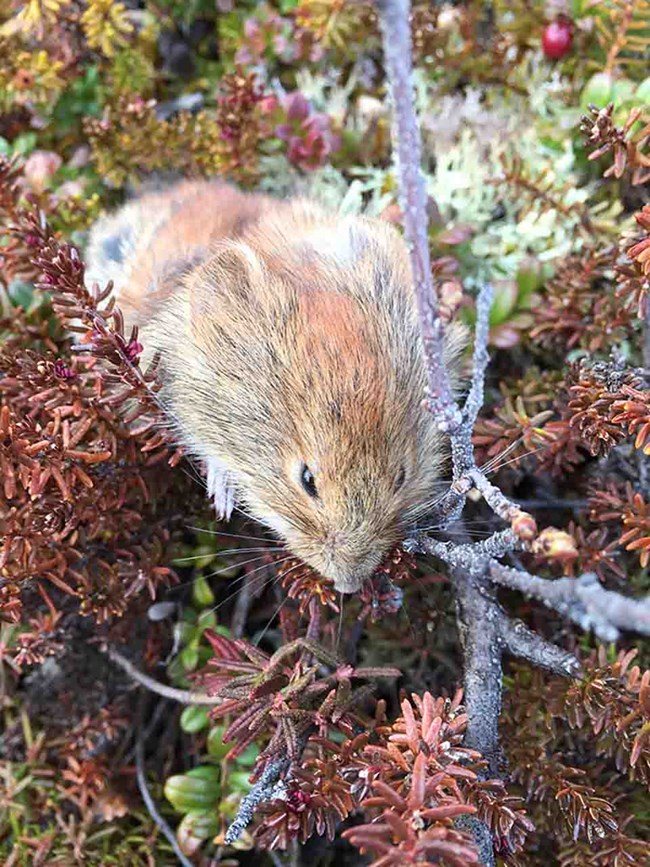
When it comes to monitoring animal species in the Central Alaska Network, we chose species that are spread across the trophic levels of park ecosystems. By doing this, we will have a better chance of observing change wherever it may come. We can try to forecast what kinds of change may occur, but it's harder to predict precisely where it will happen, or what form it may take.
Mice and voles, small and nocturnal, are not a highly visible member of the fauna community in the boreal forest, but yet occupy a foundational portion of the park ecosystems; they represent a larger proportion of biomass on the landscape than brown bears. Mice and voles consume seeds, fungi, and invertebrates and are a key source of prey for raptor species and carnivorous mammals. Mice and voles play an important ecological role in that they have the ability to influence species above and below them in the food chain. Since 1991, mice and vole populations have been monitored in Denali National Park and Preserve as part of the previous Long-term Ecological Monitoring Program, a program started in Denali years before the national inventory and monitoring program began. Data from Denali suggest that annual fluctuations in small mammal populations are strongly related to abiotic factors (such as weather). Additionally, the relative abundance of small mammal species is directly related to vegetation composition, so any changes in vegetation composition will likely affect small mammal distribution and patterns of abundance. Thus, by monitoring populations of mice and voles, we may detect evidence of change in our ecosystems.
We monitor small mammals in Denali National Park and Preserve and Yukon-Charley Rivers National Preserve to detect:
-
Trends in population estimates of density and abundance of three target species at the Rock Creek legacy plots.
-
Oscillations in small mammal population numbers that may affect other organisms in the ecosystem.
-
Drivers of small mammal population oscillations by combining data with other abiotic and biotic data.
Contact: Melanie Flamme
Learn more
Last updated: March 6, 2025
